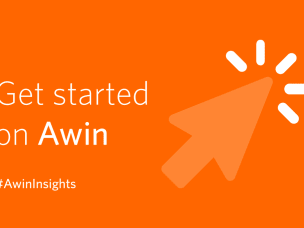Website marketing for beginners
Written by Emma Sharp on 8 minute read
Learn how to make your website draw traffic and engage your audience, two of the key features for building a successful affiliate marketing website.

As an affiliate marketer, a huge part of the work you do is simply getting eyes on your content. Of course, you want to persuade audiences to click through and buy products – but to get to that point you need to make sure people can actually find the link in the first place. You also want to build trust with your growing audience and establish yourself as a reliable source within your niche.
The more traffic is drawn to your website, the more likely you are to be successful at affiliate marketing. Website marketing helps ensure that you’re attracting interested, engaged audiences.
Let’s explore some of the most efficient, cost-effective website marketing strategies.
Know your niche
You want to find a niche area and tailor your website marketing for the specific audience you’re targeting. While you can certainly find success marketing for a broad scope of sectors, you’ll be more likely to build trust with your audience if you choose one specialty and stick with it. For example, someone looking to buy makeup is far more likely to turn to someone who only covers beauty and cosmetics than someone whose blog covers cosmetics, insurance, furniture, and camping gear.
So, before you even get into website advertising, make sure you’ve found an area of expertise you’re confident with. Go with something you know well, that you can continue to create content about consistently, and something with a large enough audience to keep engagement and conversions high in the long run – without being such a big market that you’re competing with thousands of others.
You can do some research using analytics tools like Google Trends to get ideas and see what people are looking for, and publisher tools like those offered by Awin can help ensure your website is geared for success.
Awin offers a number of tools designed to help publishers optimize their affiliate campaigns. This includes tools like the Opportunity Marketplace, which helps publishers connect with advertisers relevant to their niche. The Hub is an online portal where publishers can browse new offers and opportunities posted by advertisers in the Awin network.
Content marketing
Now that we know our niche, we can begin website promotion. First and foremost, creating regular, compelling content is absolutely essential. A plain website with a long list of links won’t do you any good – you’re essentially a salesperson – and the best way to sell the products you’re marketing is to create engaging content about them.
Product reviews are perhaps the most successful form of content for affiliate marketing. List articles, like "Top 5 Christmas Baskets for 2021" or "7 Best Vegan Chicken Alternatives" for example, are a great way to get a few links in one post while establishing yourself as an authoritative voice in the sector.
Try to keep the topics quite specific – don’t go for "Top 10 Shampoos," go for "Top 10 Shampoos for Wavy Hair." This allows you to keep posting new content consistently without limiting yourself from the get-go by starting too broad.
It doesn’t all have to be review content – you might dedicate entire posts to a single product that’s having a big launch, or you could write user guides offering tips and advice on how to get the most out of the products.
Perhaps you’re marketing kitchenware or food products – you can post recipes and link to these products within the content. Instead of finding new ways to say "here is the product and here is the link" you can weave relevant links into your content even if it’s not necessarily the primary topic of the post. If you’re an affiliate for products and services in the travel and hospitality sectors, you might consider starting a travel blog with affiliate links included as suggestions.
Think about your desired audience and what they would want to know before they buy, and aim to answer these questions naturally within your content.
Remember to maintain the same tone of voice and style throughout your content. If you stay consistent, you’ll be able to build a loyal audience who knows they can always turn to you for buying advice, reviews or other content about the things they love.
Social media
Social media is a great tool in website marketing to get the word out about your brand and content. Supplementing your written blog content with visual content on Instagram, while making sure to use a lot of relevant hashtags and links, will help you draw eyes to your site. The same goes for Pinterest, TikTok, and even Reddit.
Instagram Stories and Reels provide a great opportunity to create regular, short-form video review content. Hashtags help connect you with interested audiences, and commenting on relevant posts will help your account gain even more attention. You can add affiliate links to Instagram posts themselves, or link to your blog.
Facebook is a great venue to build more community-driven awareness for your website. Posting in Facebook groups and commenting on posts can help draw larger audiences to your site while giving your brand a more personable feel.
YouTube is a great place for video review content and how-to guide videos. Another option is to start a vlog, or any kind of YouTube channel, and include your affiliate products within your videos. For example, you could start a gaming channel, and mention your gaming chair, keyboard, mouse, microphone, and so on in videos with affiliate links embedded. You’ll see this a lot in fashion and beauty, like YouTube makeup artists posting advice and instructional videos that link to the products they use.
Email marketing
Email marketing is still a hugely effective form of web advertising. Generally, email marketing performs best when you’re serving content to existing customers, subscribers, or those who have engaged with your content before – so it may be one to put more focus into once you’ve seen some growth, but as soon as you have a few people visiting your website, you can start to build your mailing list.
Encourage users to subscribe in your blog content and social posts, and incentivize it with content and offers that are exclusive for subscribers. Then, you can start generating regular email content, like a newsletter, with affiliate links included in the body of the email itself.
SEO
There’s no denying that search engines are still an extremely powerful tool – perhaps more powerful now than ever. Aiming to get your website to the top of the search engine results page (SERP) is extremely important as almost 93% of all web traffic comes from search engines, with 76% of desktop search traffic going through Google specifically.
If someone knows they’re looking for new shoes, but they’re not sure which shoes exactly, Google is probably going to be the first place they turn to. So, while social media lets you target specific audiences, it’s more like cold calling, whereas with search engines, your audience comes looking for you.
Search engine optimization (SEO) is the process of optimizing your website and its content in order to better its chances of reaching the top of the SERP. In order to do so, you must prove to Google and its algorithm that your content is engaging, relevant, and trustworthy.
Using SEO keywords is one of the main ways to do this. Keywords are common search terms people use when browsing online. If someone is looking for new shoes, they might search "cheap new sneakers" on Google. If you have a blog that includes the term "cheap new sneakers" a couple of times, that blog has a better chance of ranking higher when the search is made.
Of course, there’s a lot more nuance to it. Where the keywords are placed, how they’re used, and whether the rest of the content is relevant are among many factors that can impact the SERP performance of your content. You can’t simply write a blog that just repeats "cheap new sneakers" over and over again.
You also need to make sure you’re choosing the right keywords. You don’t necessarily just want to go with the keywords with the highest search volume, as competition over these keywords will be high. Instead, it’s about striking a balance between search volume and competitiveness, which often means finding more particular keywords that are specific to the content you’re creating. Perhaps "cheap new sneakers" is too competitive – but there’s plenty of opportunities to target "cheap sneakers for long distance running," for example.
SEO also involves tailoring the metadata of your website – which is the text you see in the SERP, and even the URL of the website. You might choose to include specific types of content like FAQs or video guides to try and appear on Google’s featured snippets.
There are many online tools that allow you to conduct keyword research for free, and even the most basic level of SEO will be helpful in the early stages until you grow and can invest more resources into it.
Successful website marketing is all about knowing how to shape your approach for your specific product and market. There are several ways to tackle website marketing, but understanding what your audience is looking for and how to keep them engaged, whether through content production, social media, email marketing, SEO or otherwise, is essential towards drawing valuable traffic to your web.



